The Adirondack Experience, The Museum on Blue Mountain Lake in Blue Mountain Lake is just so cool. It's like time traveling.
I'm pretty fascinated by Adirondack history. We talk nowadays about how life is so tough in the Adirondacks, especially making it through the winters here. But imagine doing that 100 or 150 years ago, when the Adirondacks were just starting to be settled - when there was no electric lights or heat, no SUVs with four wheel drive, no Netflix and Amazon to stave off cabin fever. It just blows my mind.
So I was pretty excited when I was asked to visit the Adirondack Museum to write a blog post for work, and my friend Corey said she would join me. We headed down on the Tuesday after Memorial Day.
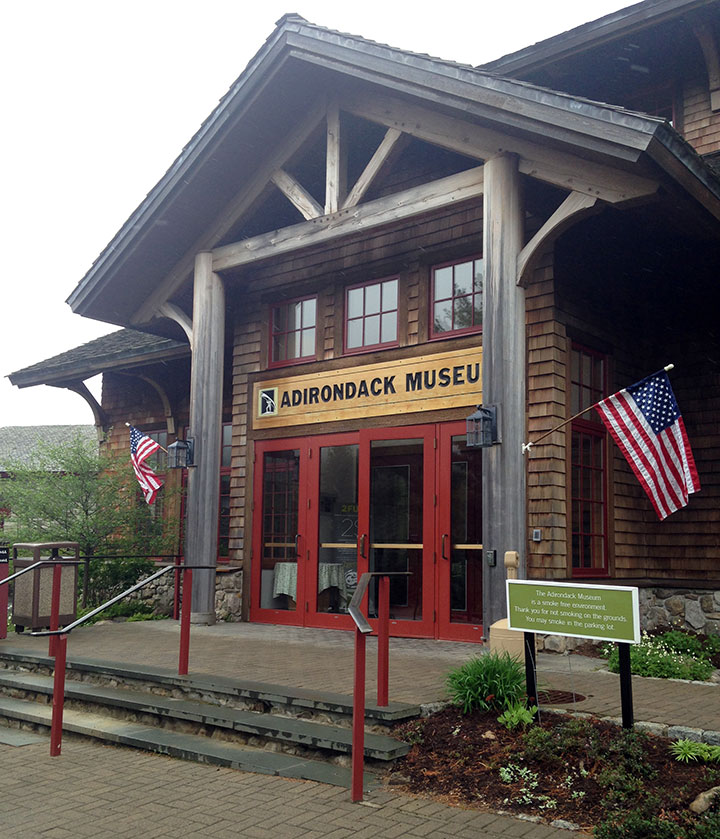
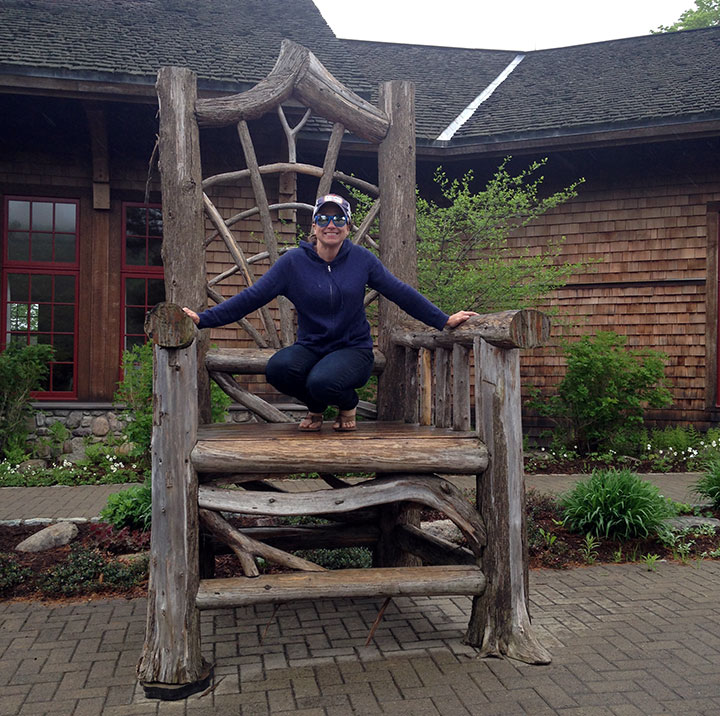
The first thing you see when you walk in the front door is an impressive sailboat (or schooner, if you're going to be picky about terms), which is so big it has to sit in a hole in the floor to fit in the room.
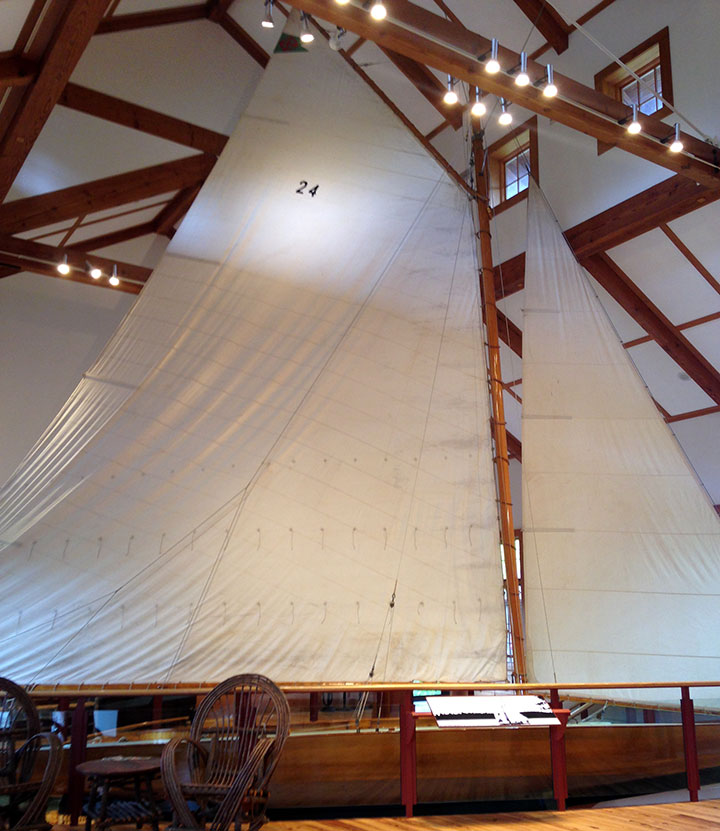
The admissions desk sits nearby. Tickets are $18 for adults, $16 for seniors 62 and older, $12 for students and teens, $6 for kids ages 6 to 12 and free for kids 5 and under, active military personnel and museum members. If you'd rather buy your tickets in advance of your trip, they can be purchase on the museum's website.
All admissions are valid for a second visit within a one-week period, which you might need to do, because there's a LOT to see!
Corey and I got in for free. Admission is free for people who live in the Adirondack Park - every day they're open in May [now past]; Sundays in June, July, August, and September; and every day they're open in October, as long as you bring a license with your in-Park address on it.
Listening tour
A cool newish feature (debuted in 2012) at the museum is a free "listening tour." It's a phone-type device on a cord that you can hang around your neck, and whenever you see a little red sign with the symbol and a number on it, you enter the number into the phone and press play to hear about that exhibit. You get the device from a desk you have to pass as you exit the admissions building and head onto the museum's grounds.
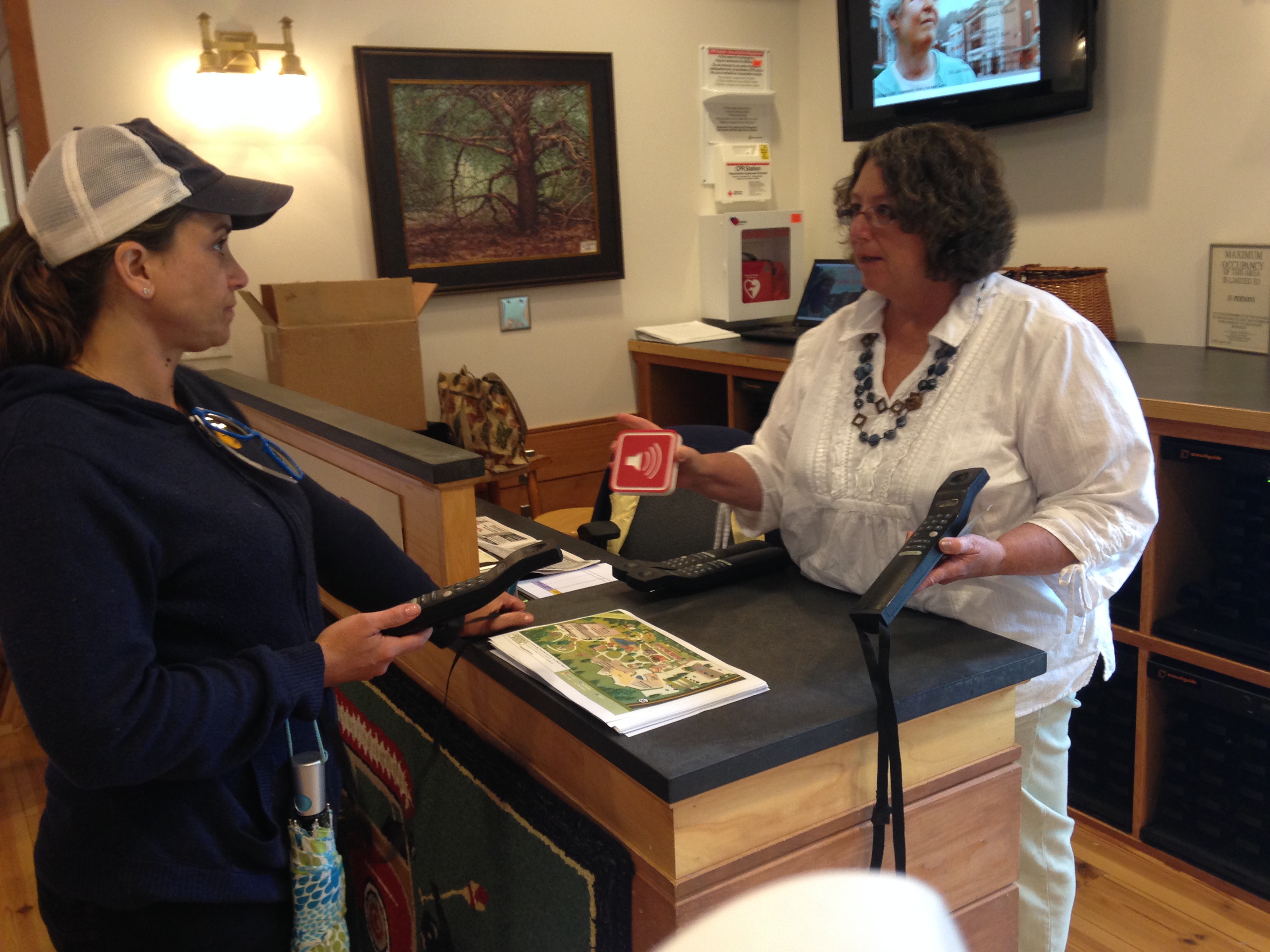
The first red symbol is right outside the door, and Corey and I were excited to hear Kevin Bacon's voice say, "HEY! I'm Kevin Bacon." He told us about how he grew up visiting the Adirondacks and still likes to come here on vacation. Then he gave us suggestions on where to go next. Various clips feature a number of other people, like logger and Indian Lake resident Dan Moore, Allison Warner, the museum's resident boat builder who lives in Saranac Lake, and Allison Buckley, a Tupper Lake native who worked for the Adirondack Council.
The museum is planning to debut a new Kids' Audio Tour this year on July 4. It will be accessible via mobile phone.
Checking out the campus
The museum's campus is a group of buildings circled around something of a courtyard area, which is utilized a lot when the museum puts on events. There are several suggestions on where to start and what path to follow - the map you are given at admissions has the buildings numbered in one order, while Kevin Bacon and the other listening hosts guide you along a different path. Corey and I ended up sort of wandering around in no particular order. I think I've done it differently every time I've ever been there.
Our first stop was a new feature: a "sonic hotel" made out of a historic log hotel. Composer John Morton partnered with the museum to create the exhibit, which intends to give viewers (and listeners) "an aural portrait of the Adirondacks in all seasons," as is explained by the sign at the start of it.
Morton placed speakers throughout the house, in interesting places like in the bathtub and under a tablecloth at the dinner table. They pipe a variety of sounds, from water splashing and birds chirping to old Adirondackers telling stories and choirs singing. It's an interesting experience that at times gets a tiny bit creepy with the cacophony of sounds from empty rooms ringing throughout the small house.
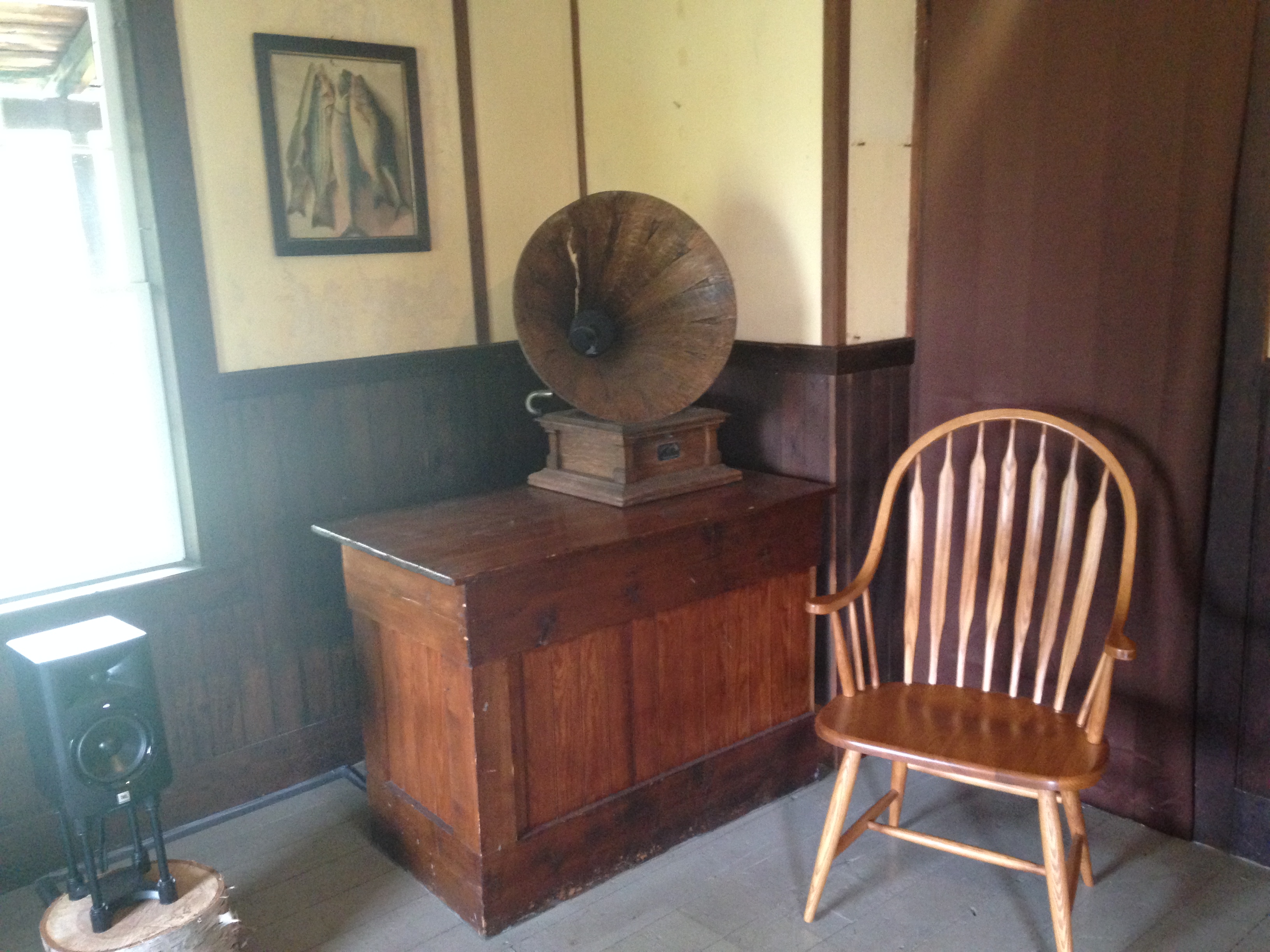
Next door to the sonic exhibit, there's a room that highlights the important place hotels have in the history and growth of the Adirondacks. It includes a maid's closet, complete with a maid's uniform, hotel registers you can look through to see some names common to the area now, and photos of grand old Adirondack hotels in their heydays around the turn of the 20th century. Did you know that the Prospect House in Blue Mountain Lake was the first hotel to have an electric light in each room when it opened in 1882?
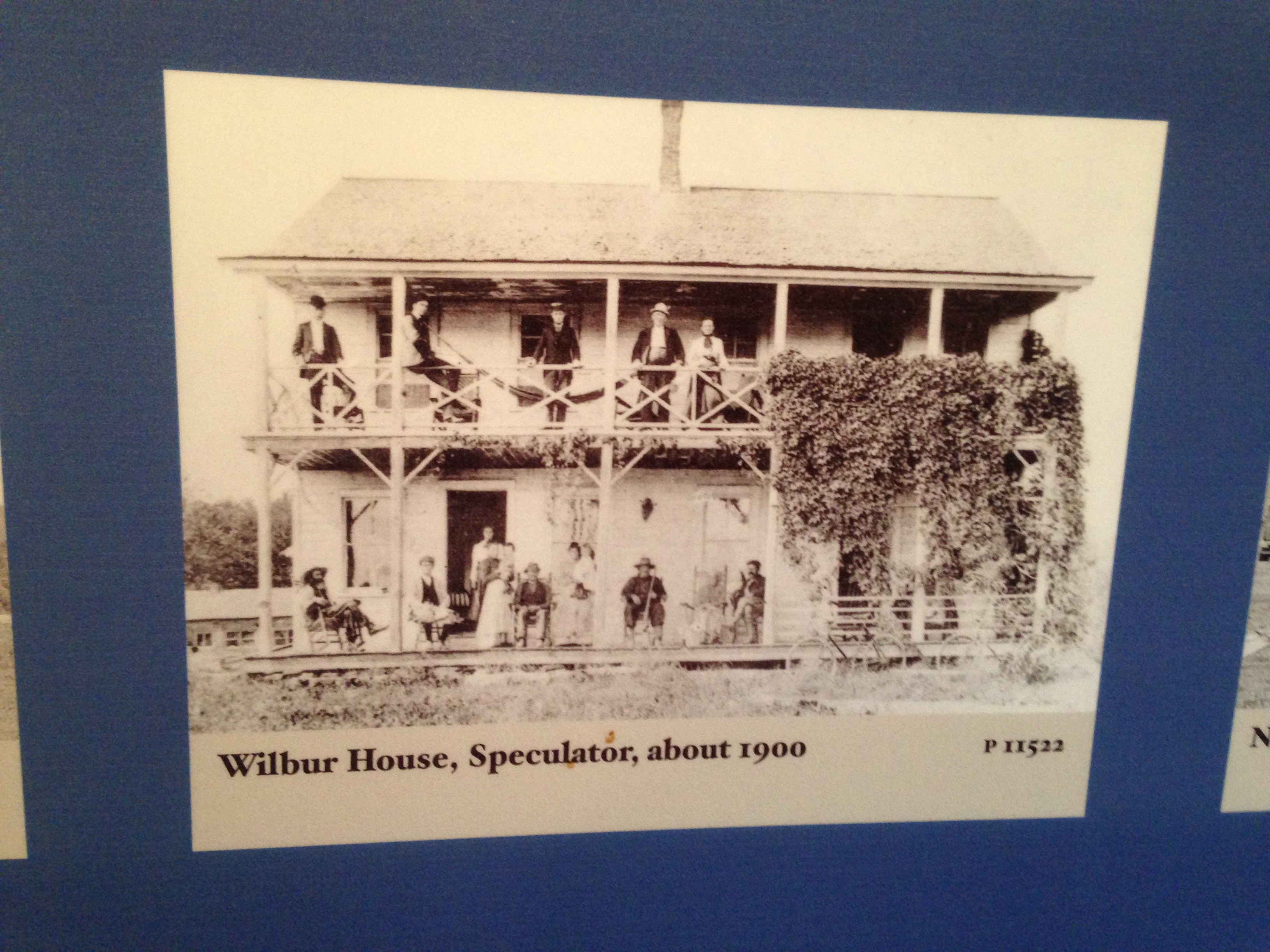
Next to that building is another fun, newer feature - a "rustic privy," or an outhouse, from a Long Lake camp built in 1906. The sign next to it explains that indoor plumbing came to the Adirondacks much later than it did to large American cities, and most homes and camps didn't make the expensive upgrade until after World War II, which ended in 1945.
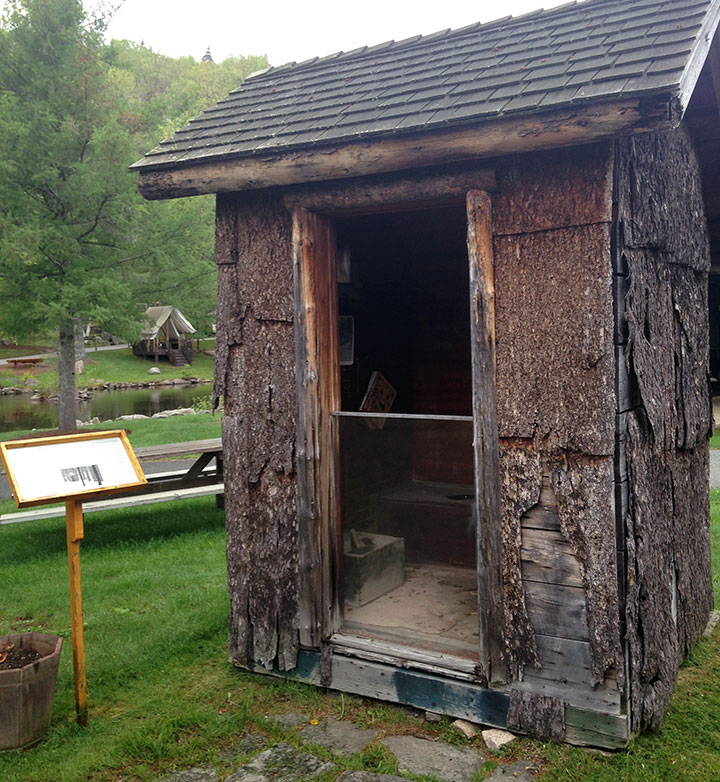
The Roads and Rails building
We headed to the Roads and Rails building next, which features an impressive collection of cool old sleighs and carriages (plus a cool contraption that was sort of like a treadmill for dogs and sheep that would spin cogs to turn butter or wash clothes). There was also an entire ironsmith's shop, as well as artifacts pertaining to roadwork, like the huge, heavy rollers highway crews would use to flatten snow rather than plow it.
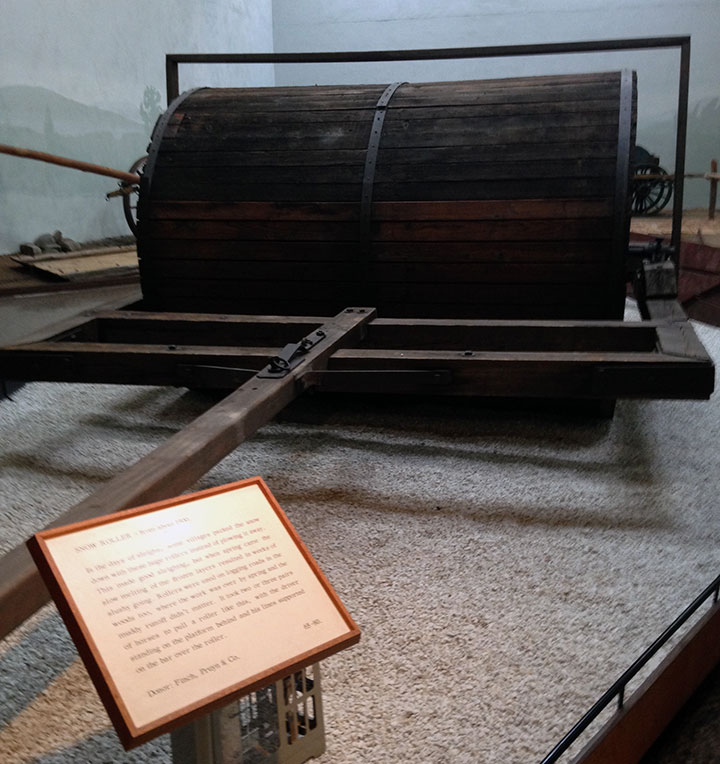
This building features a new exhibit that focuses on the Land of Makebelieve, a theme park in Upper Jay where all the buildings and everything else was made to the scale of children. It opened in 1954 and was closed in 1979 after a flood wiped it out. There had been some tiny hope that it would one day be restored, but Tropical Storm Irene in 2011 was the final flood that decimated the final building, the castle that seemed to be a centerpiece of the park. I've always been fascinated when I've heard about the park, and it was super interesting to see some of the actual artifacts from it.
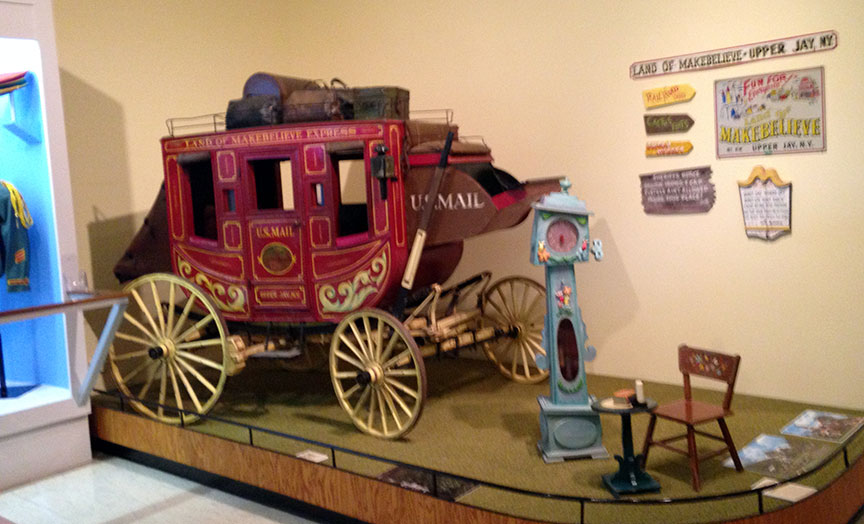
Another cool feature that blows me away every time I go to the museum is the Teddy Roosevelt section. Roosevelt was in the Adirondacks hiking when he found out that President William McKinley had died in Buffalo and that he would assume the presidency. There's an extensive timeline, plus the raincoat and pack basket Roosevelt was using when he got the news.

And of course, my very favorite feature at the museum since I was a kid going there on class trips is the opulent Private Rail Car, a rail car made by the Pullman Company for financier and railroad magnate Austin Corbin in 1890 for $60,000. The car's decadent mahogany, velvet and marble dazzled me as a young girl and still does to this day. You enter at one side and walk through the length of the car, with the bedrooms and several other features barricaded with glass so you can look but not touch.
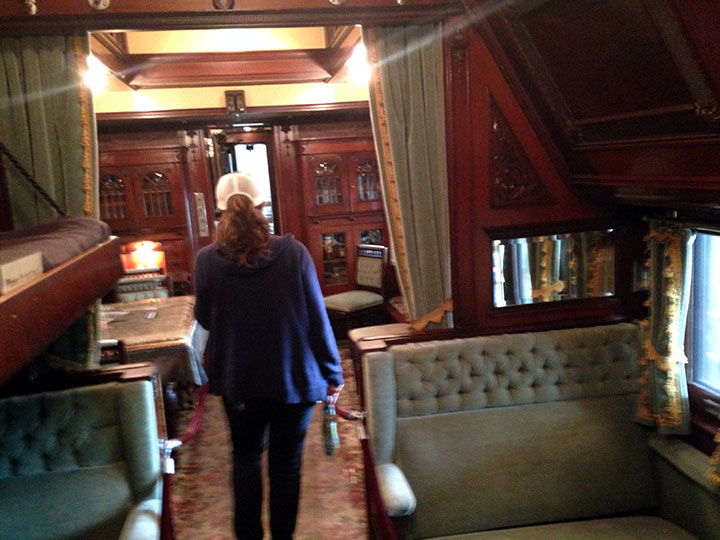
OR VIDEO!
Corey and I were also amazed to see all the rail schedules that show rail lines going straight from New York City to Tupper Lake and another local places, and that there were stops along the way in tiny places like Kildare (outside of Tupper Lake).
The great outdoors
Heading back outside, we headed around the pond next to it to a lean-to and a platform tent, the kind that are becoming popular for "glamping." Both seem to be examples of rustic-turned-comfortable, with wooden furniture, carpets and cushions.
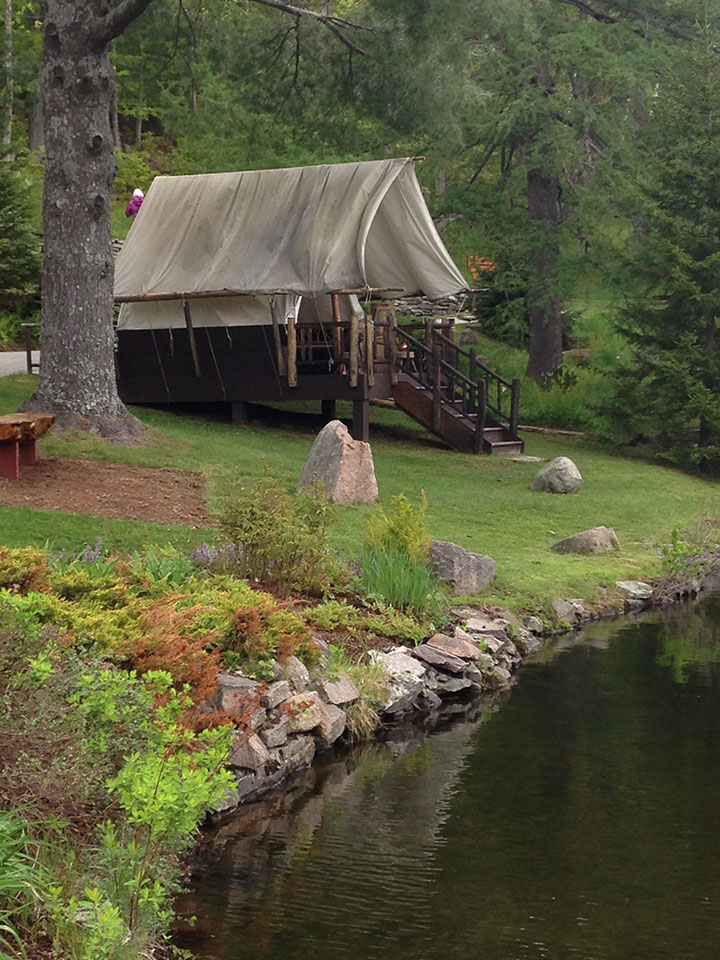
We followed a nearby path up the side of a hill, stopping to look through Bull Cottage, which is decked out in rustic Adirondack furniture. At the top of the path is a pavilion, where there are some games and a number of log samples to show how different types of wood look when they are used for building. I'm real bad at IDing trees and types of wood, so it was helpful. (Corey is bad at it, too, but I'm not supposed to tell you that because she's a real estate agent.)
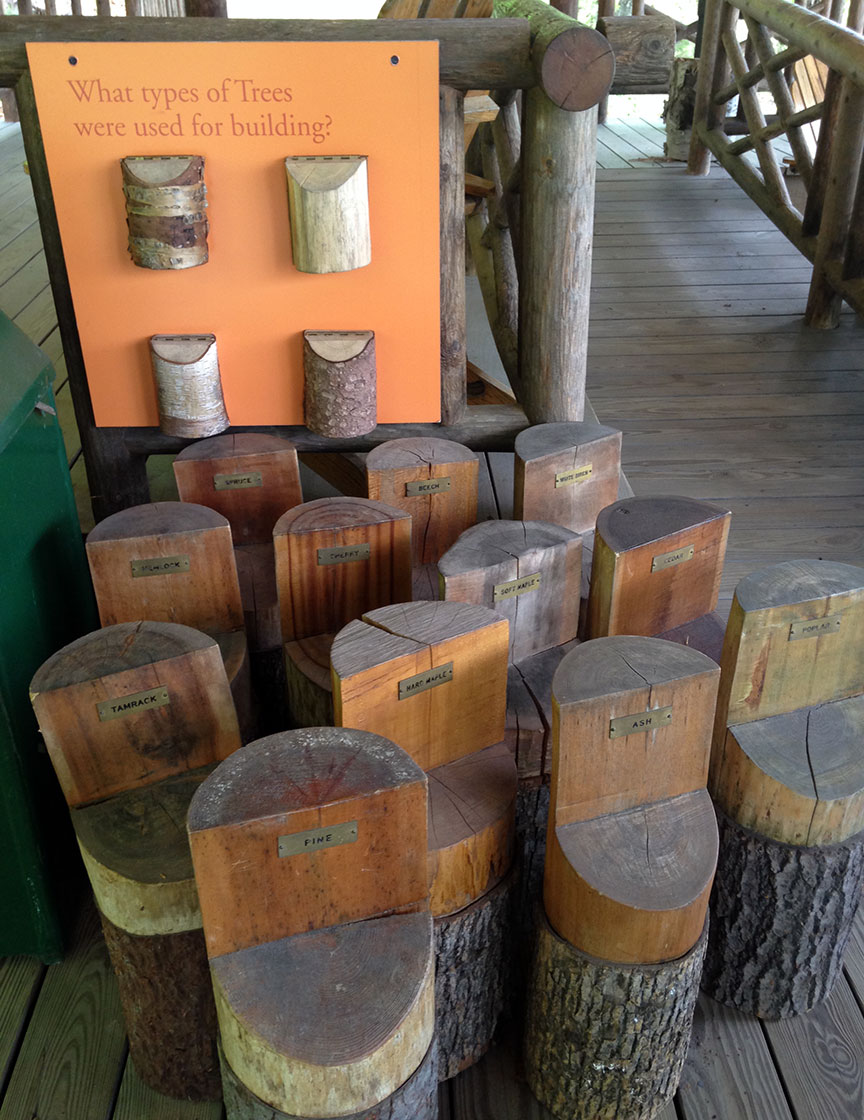
Back at the bottom of the hill, there's a rock sitting outside a building. Next to it is a sign explaining what it is: the top of Gore Mountain. It was removed from the mountain's summit so people "who are incapacitated, too busy, or even too lazy, can scramble on this stone and truthfully say they have stood on the top of Gore Mountain in the Adirondacks." So. Obviously I had to do it.
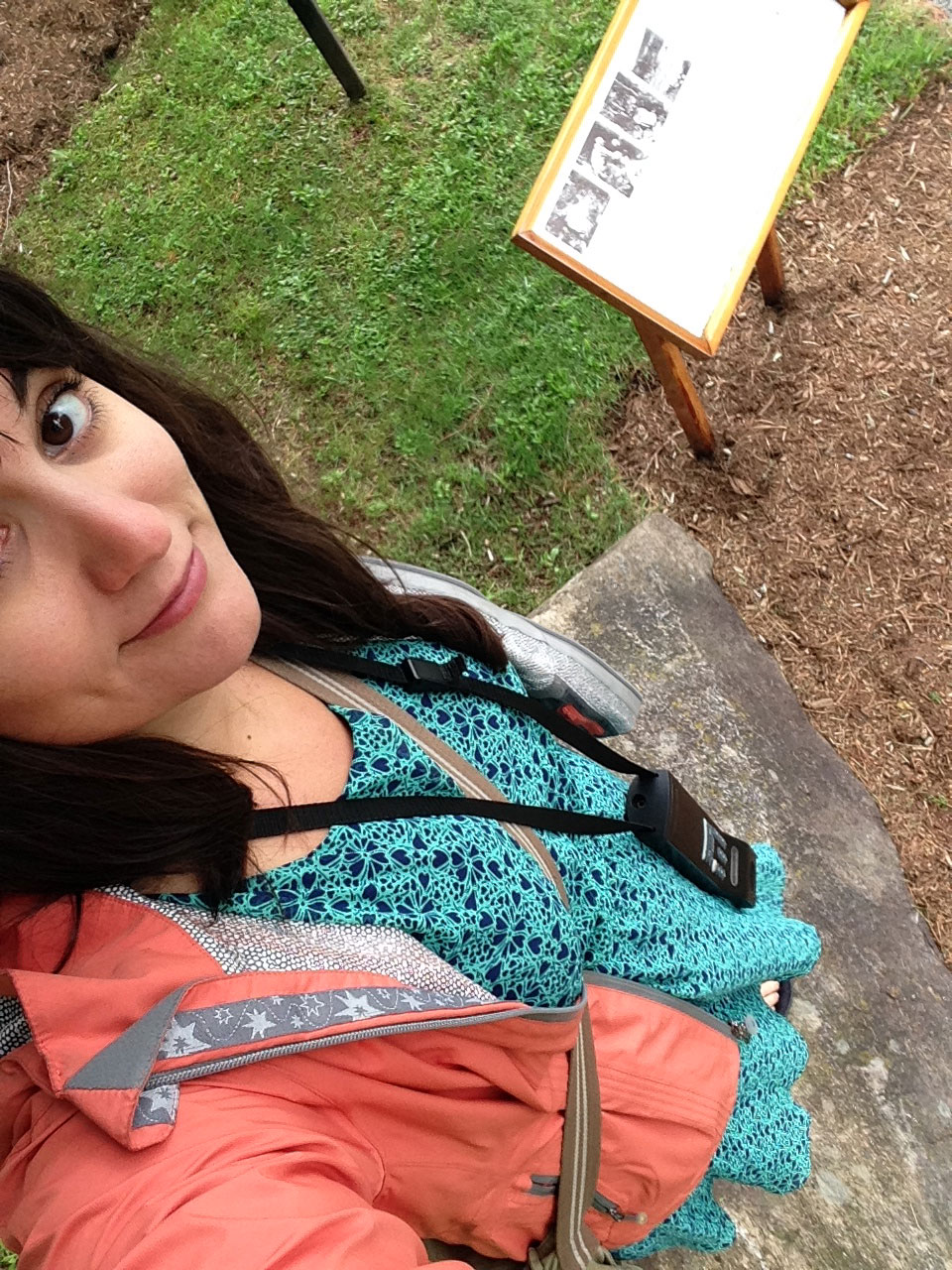
Next to the rock is a whole building that focuses on logging in the Adirondacks, called Working in the Woods. Logging obviously had a huge impact on the development of the Adirondacks, and this is an important exhibit.
It's also fascinating to learn about the hazards of being a lumberjack before everything was motorized and mechanized. There are dioramas showing how they floated logs down rivers and how they had to jump on log jams to break them up, which was incredibly dangerous.
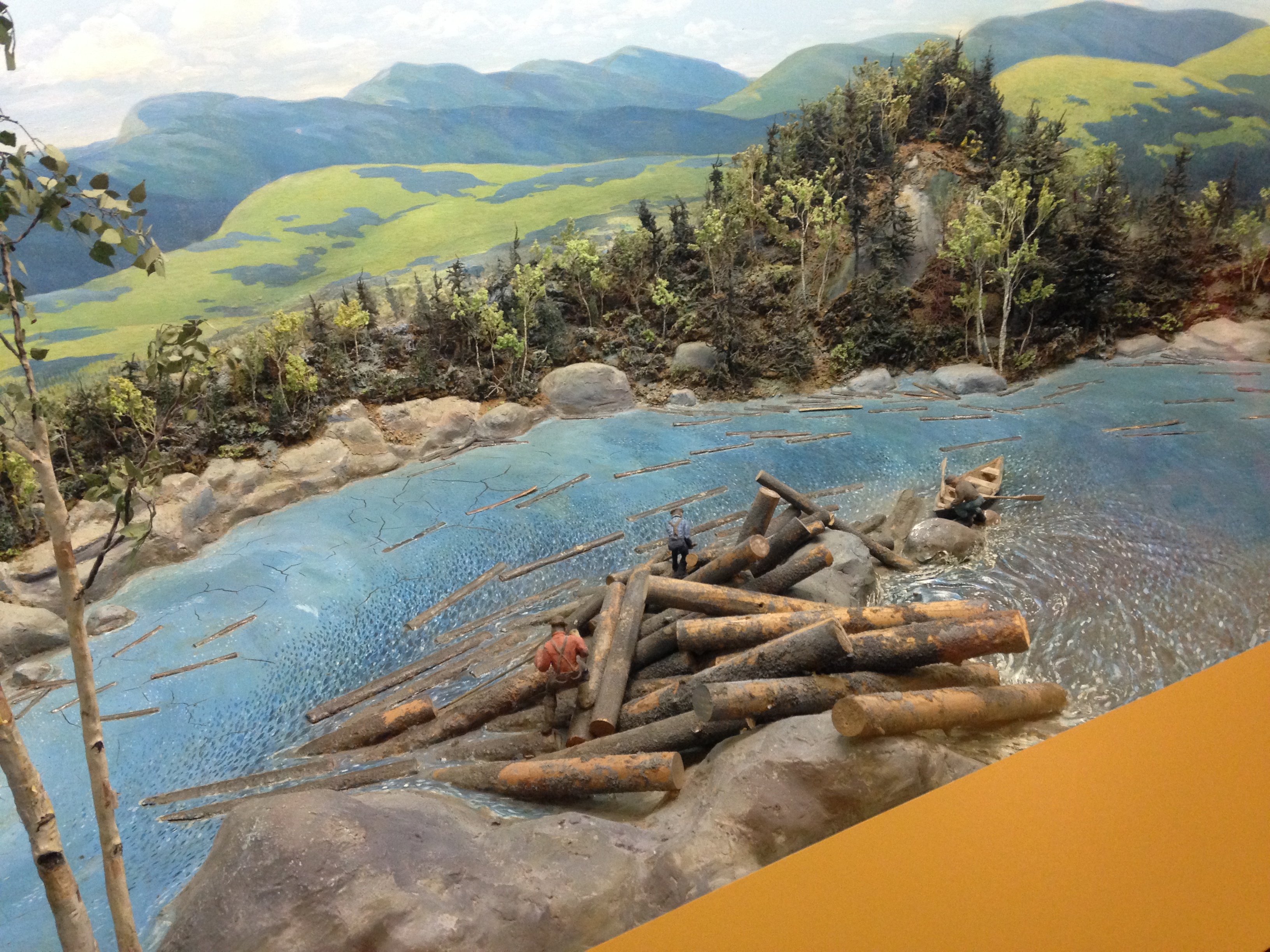
Boat building
We grabbed some (super delicious) lunch at the museum's cafe, then headed to the Boats and Boating in the Adirondacks building. It has an impressive array of vintage boats, including guide boats and some VERY old canoes.

There's also a whole guide boat-building shop where you can watch the process of a boat being built.
Heading out
After that, we had to hit the road. But of course before we left, we stopped at the gift shop. It's a little too great, and I ended up spending a little too much money there.
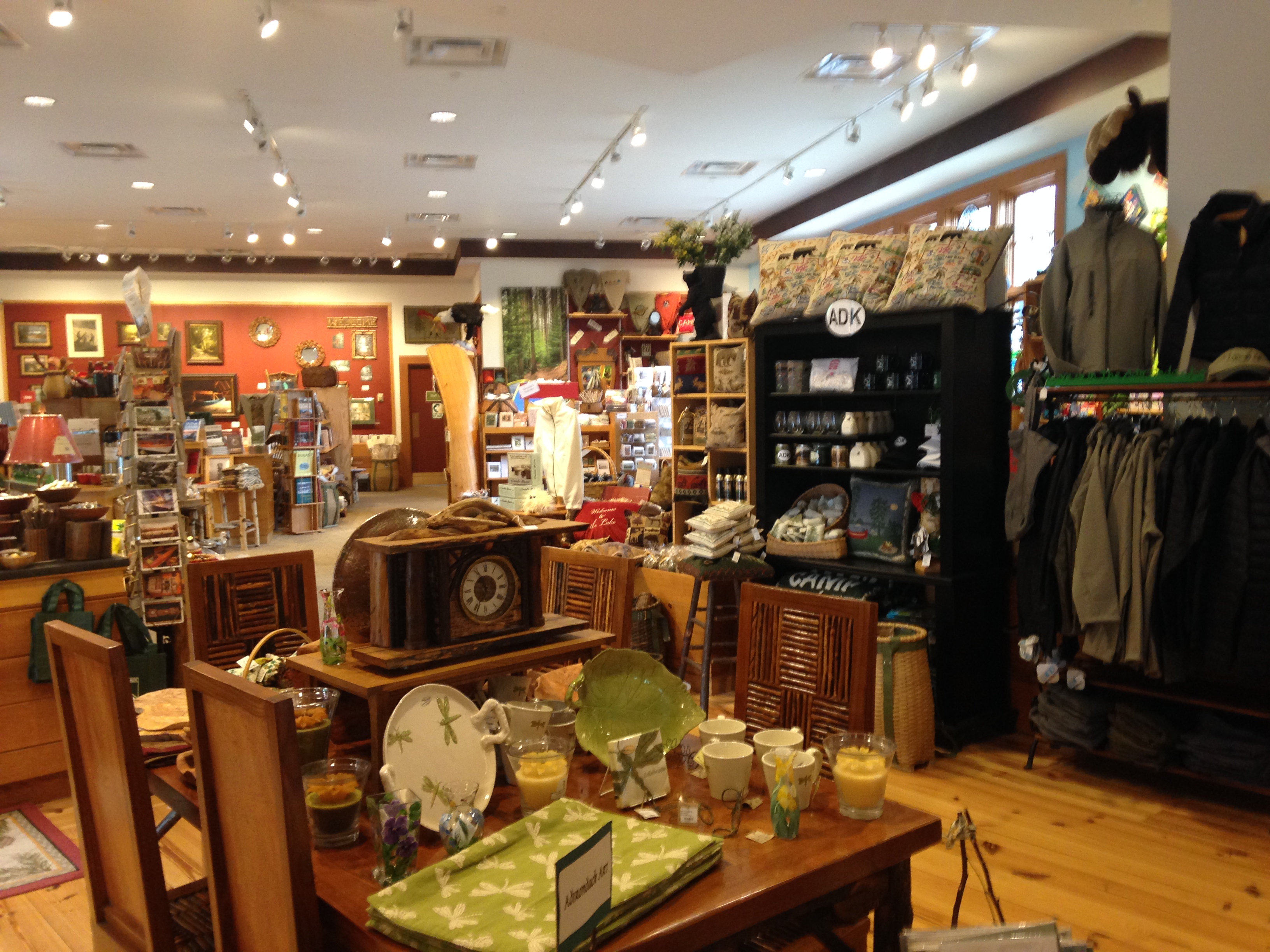
There was a ton of other stuff to check out, but we had an appointment to keep. Next time, we'll make sure to plan to be there the whole day.
The museum is open 10 a.m. to 5 p.m. seven days a week, including holidays, from May 23 to Oct. 13. In July and August, Monday night hours are extended until 8 p.m.






